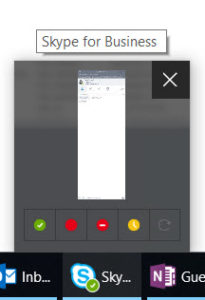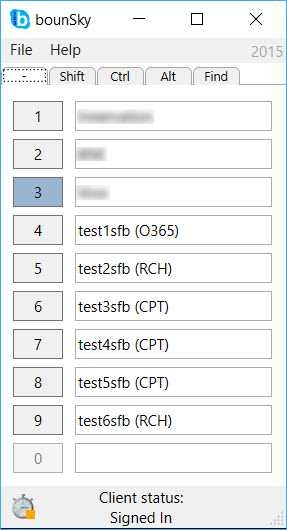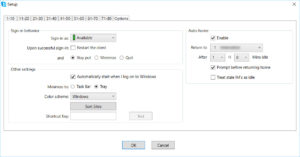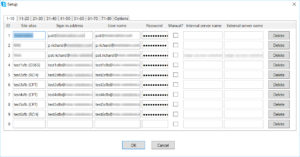The Case of the Missing Skype for Business Presence Options in the Taskbar
On Twitter, Noah Sparks (@noahsparks) asked about why some users running Windows 10 can change their Skype for Business presence from buttons that appear when hovering over the Skype for Business taskbar, and others couldn’t. See these two examples taken from my Windows 10 Insider Preview machine.
Several people started to hypothesize about the difference, and looking at bitness (32 or 64bit), client source (Click to Run or MSI), and version numbers. Turns out it’s based on the value of a interestingly named registry key called AutoOpenMainWindowWhenStartup. Alexander Holmeset (@alexholmeset) posted the right key and value. I tested it and came up with the following PowerShell code to turn it on. The code basically makes sure you’re running the v16 version of Skype for Business, and then creates the key if it doesn’t exist, and sets the value. If the key does exist, it just sets it. Fire up PowerShell and paste the following. There should be no output.
if (Get-Item -Path 'HKCU:\Software\Microsoft\Office\16.0'){
if (-Not(Get-ItemProperty -Path 'HKCU:\Software\Microsoft\Office\16.0\Lync' -Name 'AutoOpenMainWindowWhenStartup')){
$null = New-ItemProperty -Path 'HKCU:\Software\Microsoft\Office\16.0\Lync' -Name 'AutoOpenMainWindowWhenStartup' -Value 1 -PropertyType DWORD
}else{
Set-ItemProperty -Path 'HKCU:\Software\Microsoft\Office\16.0\Lync' -Name 'AutoOpenMainWindowWhenStartup' -Value 1
}
}
This code has only been tested on my machine, which is running the C2R version of the Skype for Business 2016 client. I noticed it only works when the taskbar icon is there, and doesn’t seem to work over the systray icon – but then again, there are already presence options when you click on the systray icon anyways. I haven’t tested with any other version of the Skype for Business client, nor on any other operating system. If you do test it with other platforms, please report your findings and I’ll update this post. To set it back (disable the presence options when hovering), just set the registry value to zero, such as shown below.
Set-ItemProperty -Path 'HKCU:\Software\Microsoft\Office\16.0\Lync' -Name 'AutoOpenMainWindowWhenStartup' -Value 0
Another mystery solved!










Follow Me